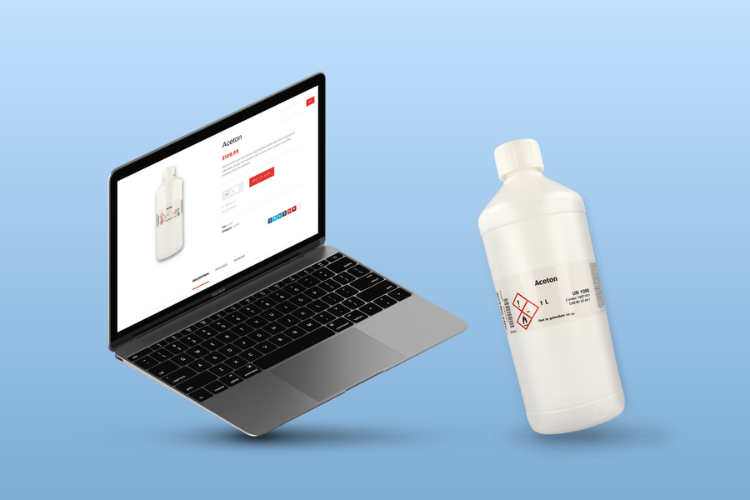In this blog post, you will read everything about the regulations for online sales of products with safety labeling.

The label on the product in the store provides the consumer with sufficient information about the potential hazards and precautionary measures. In online sales, the consumer does not have a physical label on the product to read the hazards and precautionary measures. However, it is important that consumers are also informed about the dangers of the product in a webshop and can make a decision based on that information about whether they want to purchase the product. CLP article 48 states the following:
Article 48 Advertising
Mentioning the hazards refers to the H and EUH statements, which indicate the dangers of a product. An example is "Extremely flammable gas." The associated number "H220" does not need to be mentioned but may be. Moreover, it is also recommended to show the GHS labels and mention the signal word. We often get the question whether providing the safety data sheet is sufficient to comply with the regulations for webshops, as it can easily be requested from the supplier. Unfortunately, this is not sufficient. ECHA has the following to say about this:
According to the Commission’s legal interpretation, the direct link to a safety data sheet (SDS) cannot fulfil the information obligations of Article 48(2) of CLP. Availability of an SDS on the website used for advertising mixtures according to Article 48(2) of CLP can only be considered as additional information for the general public about the type or types of hazards on the label. Source: Final report on the Forum Pilot Project on CLP focusing on control of internet sales
Mentioning the H and EUH statements is mandatory, and if this is not done, it can even result in a fine or being prosecuted. This is more than enough reason to ensure that these phrases are correctly mentioned in your webshop. Do you want to know more about the current ECHA Europe enforcement project regarding these rules? Then view the article: Online enforcement European Chemical Agency 2021.
It is important to display the legally required information to the customer in a good and professional manner. You can start by indexing which products in your range are provided with safety labeling. For this, you can read the information from the label or request the safety data sheet (SDS) from your supplier, as it contains all the necessary information. Then you determine what you want to display on your site. Do you choose only the H phrases, EUH phrases, signal words, and GHS labels? Or are you also going to show safety recommendations in the form of P phrases, such as "Keep away from open flame"?
Manual configuration of all this information takes time, effort, and often looks unprofessional. That's why Veiligvertoon can help you with this. With the press of a button, you can upload the SDS from the supplier and it is immediately translated into the required information. If you do not have the SDS, you can easily select and style the sentences to your own design. This way you decide how you display the information and where it will be placed on the site, for example under an extra tab or at the bottom of the description. Try Veiligvertoon for free.